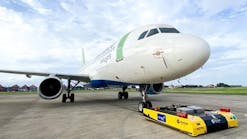A look at recent FAA enforcement cases involving alleged violations of maintenance regulations spotlight maintenance issues that the FAA is finding and fining air operators for. I say alleged violations because the matters are still in dispute and there have been no final resolutions of the cases. While these cases all involve FAA civil penalties against the operators, it is likely that enforcement action was also taken against the mechanic or mechanics involved in at least some of the cases. FAA policy, however, is to publicize significant cases against airlines and repair stations but not against individuals who hold a certificate. Whether action was or was not taken against individuals by the FAA, the problems described provide many lessons for active mechanics.
One very recent case involved an FAA civil penalty of more than $132,000 against an air cargo operator that the FAA claims did improper maintenance on a cargo door and then operated more than 100 flights. According to the FAA, a dent in a rear cargo door exceeded allowable repair limits and the mechanics were required to get the proposed repair plan approved by the aircraft manufacturer before signing-off the aircraft for return to service. The FAA charged the cargo operator with not complying with its maintenance manual, as well as operating the aircraft in an unairworthy condition. As most of you probably know, if an aircraft is not maintained in accordance with an approved maintenance manual, the FAA considers the aircraft to be unairworthy.
Another recent case involved a civil penalty of $110,000 against an EMS helicopter operator. The FAA charged that a mechanic installed a chin bubble window without following the manufacturer’s instructions and then failed to record the installation in the aircraft’s maintenance logbook. The window fell out in cruise flight requiring a precautionary landing. The window fell out after only 7.3 hours of flight time.
And, of course, the recent $12 million fine against Southwest Airlines for alleged multiple maintenance irregularities that it claims occurred in 2009 when the airline was conducting so-called “extreme-makeovers” of its Boeing 737 aircraft. The FAA investigation of Southwest and its contractor found that the contractor “failed to follow proper procedures for replacing the fuselage skins of these aircraft.” The investigators found that maintenance workers applied sealant “beneath the new skin but did not install fasteners in all of the rivet holes during the timeframe for the sealant to be effective.” The FAA also claims that the contractor failed to follow mandatory procedures for jacking up the aircraft which could result in problems with the new skin if the aircraft shifted.
Failure to follow procedures
Is there a common theme to these violations? I would say so. In each one of these recent cases, the FAA charged operators with violations stemming from a failure to follow procedures. Maybe the mechanics erred on their own or maybe the companies involved pushed them to take shortcuts. In any event, these proposed penalties are worth considering whenever a question arises about following maintenance procedures.




